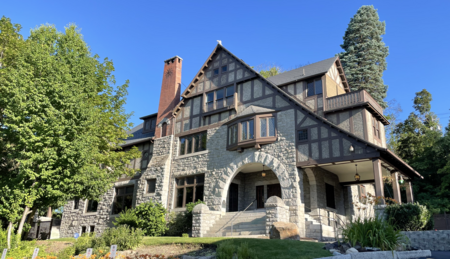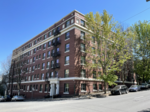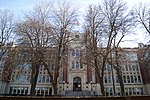Glover Mansion

The Glover Mansion is a historic Tudor revival home built in 1888 and located in the Cliff/Cannon neighborhood of Spokane, Washington, just uphill from and overlooking the city's downtown. The home was designed by architect Kirtland Cutter for James N. Glover, who founded the city of Spokane in 1873. Over the years the Glover Mansion has served as a residence, housed Spokane's Unitarian Universalist Church, and more recently been used as an event venue. The Glover Mansion was added to the National Register of Historic Places (NRHP) in 1973, and to the Spokane Register of Historic Places in 1995. As of 2022, the Glover Mansion's main use is as an event venue known for hosting weddings and receptions. It should not be confused with the Glover House, another former home of James Glover in Spokane that is also listed on the NRHP.
Excerpt from the Wikipedia article Glover Mansion (License: CC BY-SA 3.0, Authors, Images).Glover Mansion
West 8th Avenue, Spokane
Geographical coordinates (GPS) Address Nearby Places Show on map
Geographical coordinates (GPS)
| Latitude | Longitude |
|---|---|
| N 47.648055555556 ° | E -117.41722222222 ° |
Address
Glover House
West 8th Avenue
99201 Spokane
Washington, United States
Open on Google Maps











